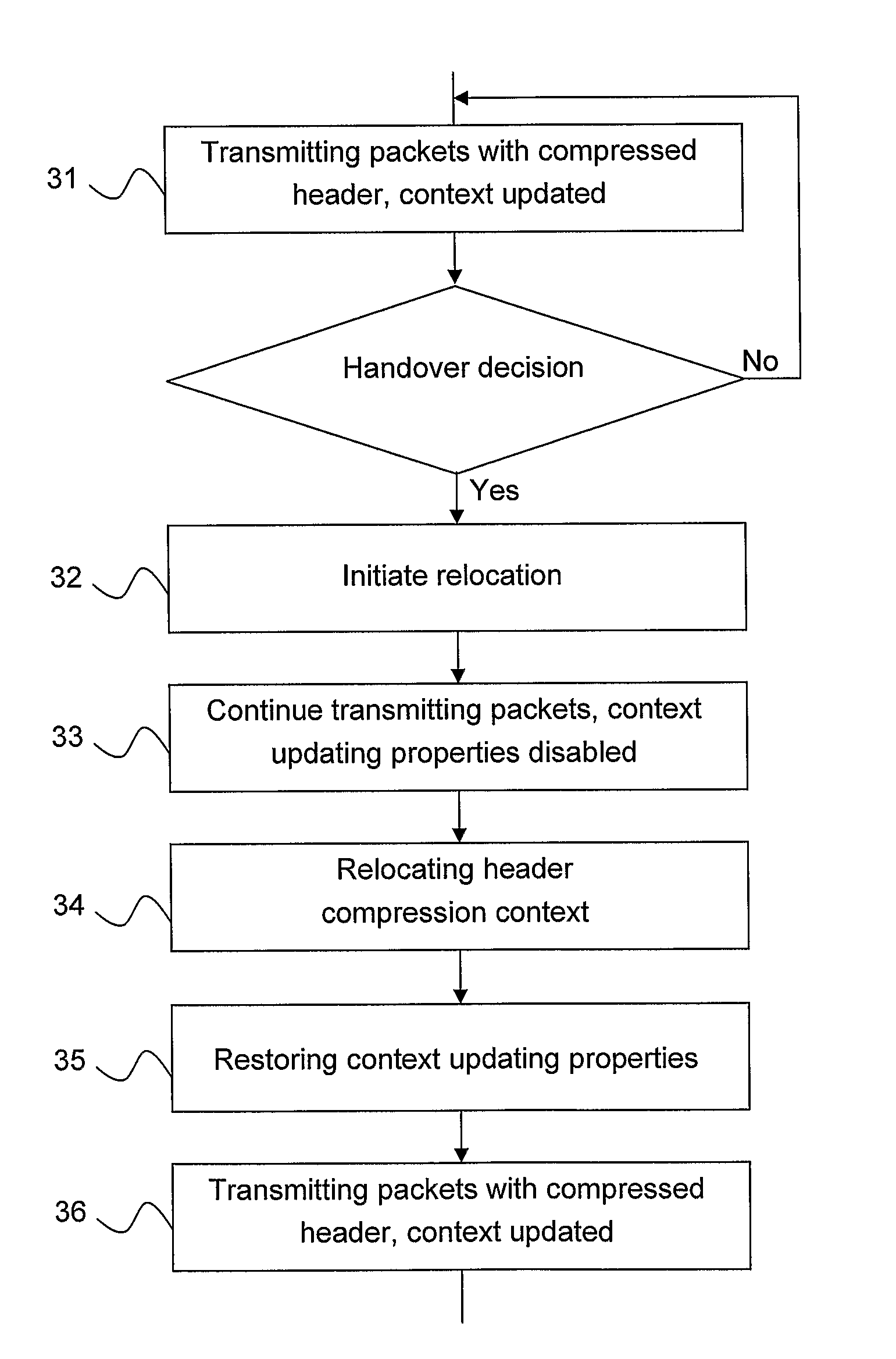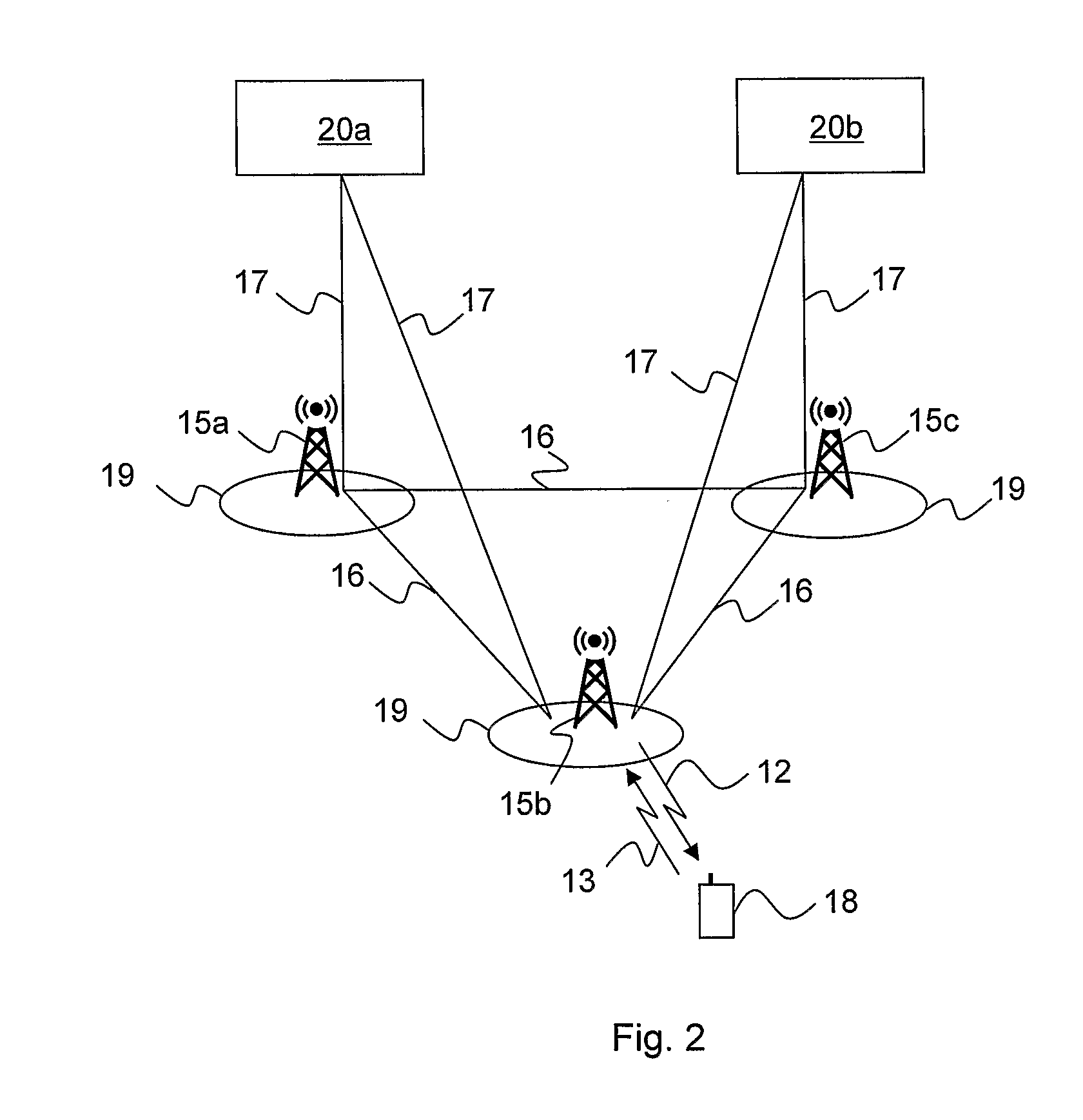Method and Apparatus for Relocating a Header Compression Context in a Wireless Communication System
a wireless communication system and header compression technology, applied in the field of wireless communication system methods and apparatus, can solve the problems of inefficient link usage, meant to update the context, and become a challenging task
- Summary
- Abstract
- Description
- Claims
- Application Information
AI Technical Summary
Benefits of technology
Problems solved by technology
Method used
Image
Examples
Embodiment Construction
[0094]FIG. 1 depicts a communication system, such as a Wideband Code Division Multiple Access (WCDMA) system, including a Radio Access Network (RAN), such as the UMTS Terrestrial Radio Access Network (UTRAN) architecture, comprising at least one Radio Base Station (RBS) (or Node B) 11a-b, connected to one or more Radio Network Controllers (RNCs) 10 (only one shown in FIG. 1). The RAN is connected over an interface to a Core network (CN) 12, which may be a connection-oriented external CN such as the Public Switched Telephone Network (PSTN) or the Integrated Services Digital Network (ISDN), and / or a connectionless external CN as the Internet.
[0095]The RAN and the CN 12 provide communication and control for a plurality of user equipments (UE) 18a-d. The UEs 18 each uses downlink (DL) channels and uplink (UL) channels to communicate with at least one RBS 15 over a radio or air interface.
[0096]Another communication system, such as a Long Term Evolution (LTE) system is shown in FIG. 2, in...
PUM
 Login to View More
Login to View More Abstract
Description
Claims
Application Information
 Login to View More
Login to View More - R&D
- Intellectual Property
- Life Sciences
- Materials
- Tech Scout
- Unparalleled Data Quality
- Higher Quality Content
- 60% Fewer Hallucinations
Browse by: Latest US Patents, China's latest patents, Technical Efficacy Thesaurus, Application Domain, Technology Topic, Popular Technical Reports.
© 2025 PatSnap. All rights reserved.Legal|Privacy policy|Modern Slavery Act Transparency Statement|Sitemap|About US| Contact US: help@patsnap.com



